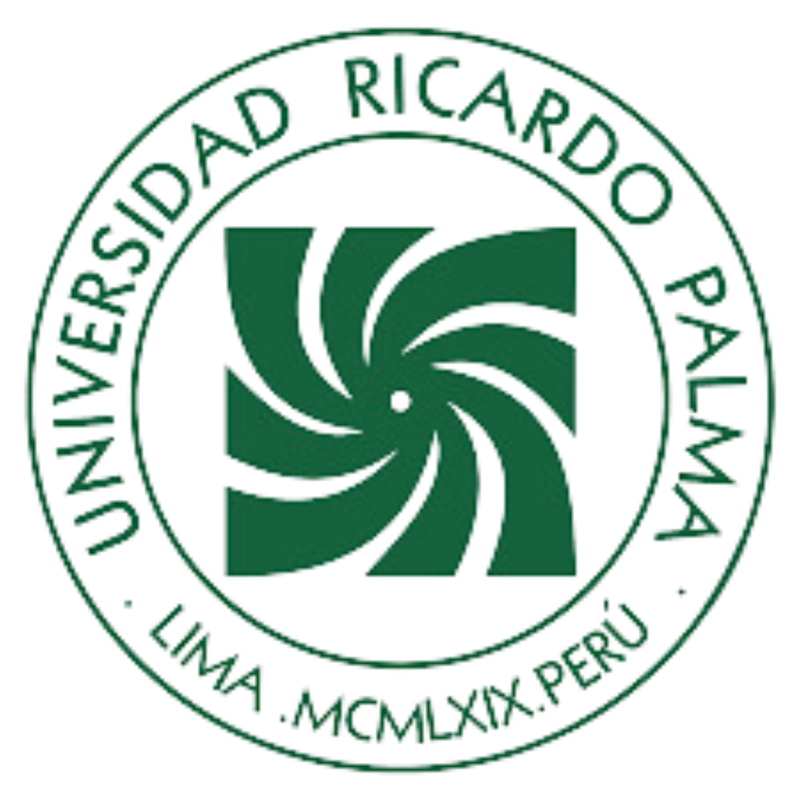INTRODUCTION
Rhinoscleroma (RS) is a chronic granulomatous infectious disease of the upper airways caused by Klebsiella rhinoscleromatis. This bacterium, frequently, affects the nasopharynx
1
, but also the paranasal sinuses, orbit, and larynx, leading to the deformation of the nasal tracheal and bronchial mucosa (nodular type) developing tracheal stenosis
2
.
RS is endemic to Central America, Egypt, Central Africa, India, Middle Eastern countries and Indonesia
1
. There are several predisposing factors such as low socioeconomic level, malnutrition, poor hygiene, and iron deficiency anemia which facilitate the infection process
3
. It is transmitted by direct or indirect contact with nasal exudate from an infected person
2
. It is more predisposing in women with a 13:1 ratio and occurs approximately in the middle-aged population
3
. The incidence and prevalence of RS is low; however, more than 16 000 cases have been reported worldwide since 1960
4
.
The diagnosis of RS is based on clinical, imaging, histopathological and microbial findings
1
.Clinically and pathologically, there are 3 phases: The catarrhal/exudative phase causes non-specific early symptoms that can last for weeks to months with fetid and purulent rhinorrhea
1
3
. Histologically, squamous metaplasia with polymorphonuclear infiltrate, hyperkeratosis and atrophy are usually observed
3
5
.The granulomatous/hypertrophic phase lasts months to years and is characterized by the presence of masses obstructing the nasal passages, epistaxis, deformity and destruction of the nasal septum ("stringy" nose)
1
5
. Also, in this phase the biopsy is usually diagnostic, because Mikulicz cells are identified due to the presence of large foamy cells surrounded by plasma cell infiltrates with lymphocytes, neutrophils, and Russel bodies
1
. In the third and last sclerotic/cicatricial phase, inflammatory cells, extensive fibrosis formation and adhesions leading to nasal stenosis are observed; few or no Mikulicz cells are seen in this phase
1
3
.
Radiological imaging is essential for the early diagnosis of RS, therefore computed tomography (CT) and/or magnetic resonance imaging (MRI) is recommended to evaluate the lesions. In CT, lesions are homogeneous, hyperdense without enhancement
6
. In MRI, we can identify in the second phase the Mikulicz cells and Russel bodies as hyperintense areas in T2 and T3 sequences. In the fibrotic phase, hypointense areas can be observed as a heterogeneous pattern suggesting fibrosis in the T2 sequence
6
.
RS is effectively treated with antibiotics, debridement and surgical repair
1
. The duration of treatment is usually prolonged, approximately 2 to 3 months or until cultures and pathological examination are negative
1
7
. Ciprofloxacin is recommended as the first line of treatment, but other drugs such as rifampicin, trimethoprim sulfamethoxazole, ciprofloxacin and doxycycline can also be used as dual therapy depending on the bacterial susceptibility test of K. rhinoscleromatis or therapeutic response
1
5
.
The present case aims to report to the medical community a rare case of rhinoscleroma, so that it can be considered as a differential diagnosis in some cases of atypical presentation of mucormycosis. We consider that it will be of great importance to have this case as a background, especially for otorhinolaryngologists physicians, head neck and maxillofacial surgeons and infectious disease specialists.
CASE REPORT
A 60-year-old female patient diagnosed with diabetes mellitus type 2 and long-standing hypertension was admitted to the emergency department with left retroocular headache and gaze deviation for 5 months (Fig. 1). She reports that the clinical picture began with constant and persistent rhinorrhea so she goes to the medical center where a brain and turbinates tomography is performed, and the report describes sinusitis for which treatment is prescribed.
The patient reported that her symptoms persisted and worsened, prompting her to visit the Instituto Nacional de Ciencias Neurológicas of Peru, where a new tomography study was requested, which described "expansive lesion of neoformative aspect locally advanced with epicenter in the pterygo maxillary fossa with invasion of the maxillary sinus and lateral extension to the middle and upper fossa towards the orbital cavity and discreetly to the cavernous sinus". Due to this result, she was referred to the Instituto Nacional de Enfermedades Neoplásicas of Peru where a biopsy of the lesion was performed and the result was "nasal mucosa infected by thin and septate hyphae associated with necrosis, suggestive of infection by mucor".
After this result, the patient was referred to the internal medicine service of the Hospital María Auxiliadora, where medical treatment of mucormycosis was started with amphotericin b deoxycholate at a dose of 1mg/kg/day; however, the patient only received 3 doses of this drug since in coordination with the head and neck surgery service it was suggested that it was not a mucor infection since the patient had been ill for approximately 5 months. The patient was admitted to the operating room for the removal of the lesion. During the surgical procedure, the macroscopic characteristics of mucor infection were not found, so we had to wait for the result of the microscopic study of the tumor that finally revealed the diagnosis rhinoscleroma.
Treatment was started using ciprofloxacin at a dose of 750 mg po every 24 hours. The patient improved and was discharged 7 days after starting antibiotic treatment.
Informed consent was obtained from the patient
Figure 1
Brownish, crusted lesions on the dorsal nasal wall, with slight periorbital erythema and increased volume in the left mid-facial third, as well as deformity in the nasal architecture
DISCUSSION
Rhinoscleroma was first described in 1870 by Von Hebra; then, in 1882, Von Frisch saw the possible association with a microbial agent. Finally, Mikulicz demonstrated the foam cell’s presence in these tissues (Mikulicz cells)
8
.
Rhinoscleroma is an endemic disease with high prevalence in Africa, Asia and Latin America, but many cases have been recently reported in other areas such as Central Europe
9
10
. Rhinoscleroma occurs predominantly within middle-aged low-income women with poor nutritional and hygienic conditions
9
11
.
This entity is associated with Klebsiella rhinoscleromatis, an encapsulated, gram-negative bacilli which has great affinity for nasal mucosas and spreads by contact with infected patient’s nasal exudates
8
12
.
Humans are the only known hosts, and the nasal cavity is the most affected site (95%); then, nasopharyngeal (18-43%), larynx (15-40%), trachea (12%) and bronchi (2-7%)
9
.
Rhinoscleroma progresses through three stages: catarrhal, granulomatous, and sclerotic
10
11
.
The mainstay of the diagnosis is histopathology, where we can find lymphocyte infiltration, plasma cells and the presence of Mikulicz cells which are a pathognomonic clue to rhinoscleroma. All these changes are usually seen at the granulomatous stage. At this point, intracytoplasmic bacilli can be demonstrated by special stains such as Gram, PAS, Giemsa and others. Also, in granulomatous inflammation, bacilli are present in 50% of tissues cultures
8
12
.
The recommended imaging techniques are MRI and CT scan where characteristic lesions are homogeneous, hyperdense and non-enhancing masses with well-defined borders
10
12
.
In context of granulomatous diseases, the main differential diagnosis to be ruled out is tuberculosis, especially in our country. Indeed, others like Actinomycosis, leprosy, fungal infection, mucocutaneous leishmaniasis, or even inflammatory diseases and lymphomas should also be considered
9
11
.
In the context of fungal infections, it is important to consider mucormycosis as a differential diagnosis because this disease, is currently the third cause of invasive fungal infection after candidiasis and aspergillosis. The classic clinical presentation with rhinosinusal involvement is linked to diabetic ketoacidosis. The distribution of clinical forms according to frequency is as follows: sinus 39%, pulmonary 24%, cutaneous 19%. The prerequisites for diagnosis are a high index of suspicion, recognition of risk factors and rapid assessment of clinical symptoms. A necrotic ulcer with blackish eschar (cutaneous or mucosal) is the characteristic lesion of mucormycosis and should be a red flag in all patients with risk factors, but the definitive diagnosis is made by biopsy culture
8
9
.
In our case, we saw a patient with a mucocutaneous lesion with characteristics of soft tissue destruction according to tomography studies; in addition, a necrotic lesion was found in biopsy with characteristics suggestive of mucormycosis; however, the time of clinical presentation did not typically correspond to this fungal infection which in more than 90% of cases are of rapid progression (days)
10
12
.
Mucormycosis was ruled out by the final microscopic study of the lesion, and the diagnosis of rhinoscleroma was confirmed.
9
11
.
Treatment strategies for rhinoscleroma include long term combinations of antibiotics often requiring dual or triple therapies. Examples include rifampin and trimethoprim, sulfamethoxazole and ciprofloxacin, ciprofloxacin and cotrimoxazole, and ciprofloxacin and doxycycline with duration of therapy lasting at least 2 months. The surgical treatment is reserved for obstructive lesions
9
12
.
Because of the high recurrence, early proper diagnosis and treatment are essential for the patient's outcome
8
9
10
11
12
.
CONCLUSIÓN
We believe that clinical evaluation and diagnosis are currently undervalued, with more emphasis placed on complementary examinations, even when clinical features suggest otherwise.
As we present in this case, both the imaging studies and the first pathological anatomy indicated a diagnosis of mucor infection; however, the clinical picture was not compatible, so the diagnosis was reconsidered. The new approach established a new entity which was confirmed with the result of the surgical specimen and, from this, the specific treatment was indicated.
Therefore, it is essential to prioritize the importance of the clinical presentation over diagnostic support studies. Indeed, it is imperative to consider a broad of differential diagnoses in immunosuppressed patients with granulomatous lesions. This case will serve to recognize and diagnose similar cases.





